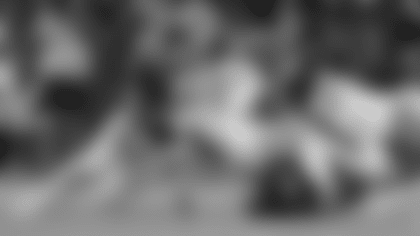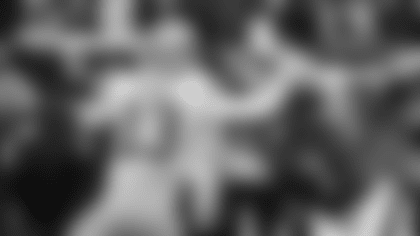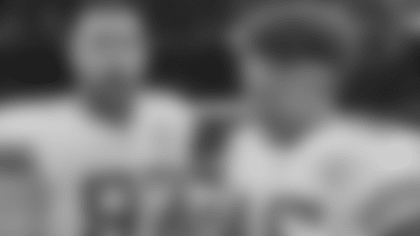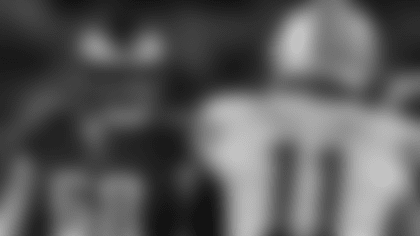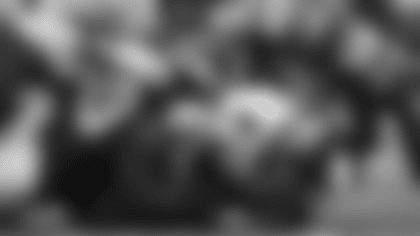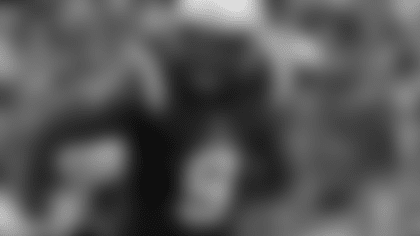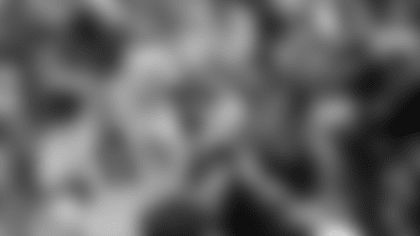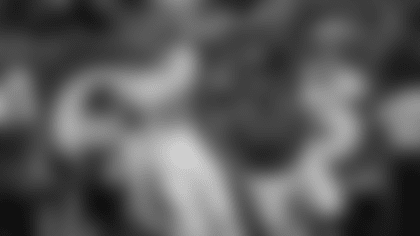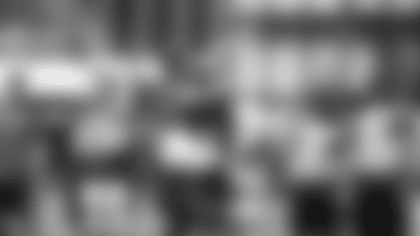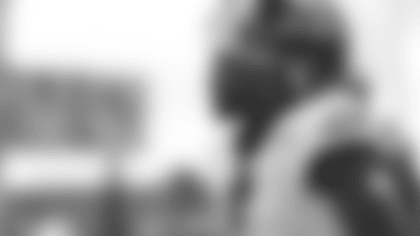In 2013, the Jacksonville Jaguars finished last in the league in points scored (15.4 per game). They finished last in the league in third-down offense (31 percent). Their offense finished last in the league in the red zone (43.9 percent). They were 31st in total yards (293.8 per game) as well as yards rushing (78.8 per game). Defensively, they were a little bit better - 28th in points (28.1 per game), 27th in total yards (379.4 per game), 29th in yards rushing (131.8 per game) and 27th on third downs (42 percent). Off the cuff, looking at those numbers, one would expect a cakewalk on Sunday afternoon.
I'm here to tell you that the Jaguars will not be a stroll in the park.
The team that ended 2013 was far different than the one that started the season, and this summer they played inspired football and were very productive on both sides of the ball. Offensively, the team spread the ball around to a group of young, talented receivers and relied on a power running game. Defensively, this team goes two deep in the front seven and flies to the ball with a relentless attitude that makes them a very fun unit to watch. You have to give a ton of credit to the players, head coach Gus Bradley and his staff, and general manager Dave Caldwell and his group for really turning the culture around and getting players to buy in, because this team is going to threaten the division sooner rather than later.
Before we get to the defense, I first wanted to start with the offensive side of the ball. Last year, because of injuries and a lack of talent on the outside, a majority of the Jaguars' big plays came via deception. Whether that came in the form of gadget plays, throwbacks or misdirection, they looked to deceive opponents and steal points where they could. They relied heavily on very simple pass concepts such as "Tosser" (double slant), "Stick" and "Flood" (three-level stretch). On the ground, they looked to be a power run team and the outside zone, or "Stretch" play, was their bread and butter.
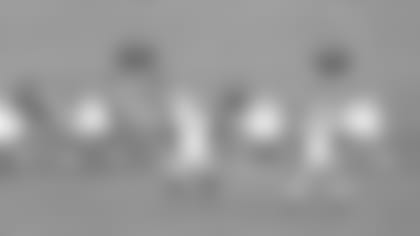
Here's a shot of what their stretch run play looks like. All of their linemen across the board would reach to the playside, stretching the defense horizontally, with the hope of creating a cutback lane inside for the running back. The Jaguars still look to get defenses on the move in the run game, but in the preseason they used a slightly different variation.

Very similar to the Sweep play we have watched the Eagles run this summer, the Jaguars are pulling two of their interior linemen as lead blockers. This is still in essence a stretch play, but with your two athletic linemen out in front you have the ability set up an alley for your ball carrier out on the perimeter. The Jaguars went out and signed free agent guard Zane Beadles this offseason from Denver, and his ability to play in space clearly allows them to run this play efficiently.
In the shot above, you can clearly see Beadles (No. 68, the left guard), get out in front and lead the way for running back Storm Johnson. Beadles isn't the only interior lineman that Jacksonville brought in that can hold his own in space though ...
This is the same play, but to the right side, where rookie guard Brandon Linder gets out and cuts the pursuing defender, bringing him to the ground to allow the ball carrier to pick up extra yards. Linder (No. 65, the right guard) played for offensive coordinator Jed Fisch at the University of Miami and saw time at both guard and center before locking down the right guard position this preseason.
While they like to get on the edge, at it's heart this offense wants to get between the tackles and pound opposing defenses. That idea was reinforced by the signing of running back Toby Gerhart, a physical enforcer at the running back position who gets a lot of yards after contact. The run that I would expect we'll see a lot of from this team this fall, and one we saw in the preseason as well, is good ol' power.
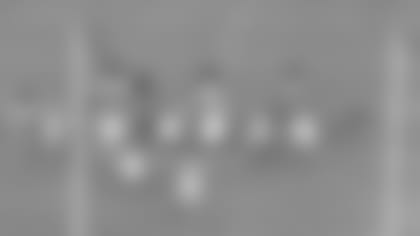
You're going to see the offensive linemen to the playside (in this case, the left of the formation) block down, A pulling guard will come from the backside. The Jaguars run 2-back and 1-back power, meaning with and without a fullback. In this case, you see starting fullback Will Ta'ufo'ou (No. 45) in the backfield leading the way for Gerhart.
Good blocking up front and good vision and trust by Gerhart lead to a strong run inside. It's runs like this that really set up play-action for Jacksonville, and they really like to get their quarterback out on the perimeter with bootlegs and waggle plays off of play-action where they pull the guard. Look for them to use power run and stretch plays to set those shot plays up on Sunday.
Shifting to the pass game, I wrote earlier that the Jaguars really favored the "Tosser" concept or double slants. Let's see what that looks like.

Tosser is a 3-step horizontal stretch concept designed to get the ball out of the quarterback's hand quickly. What I mean when I say "horizontal stretch," is that the defense is stretched horizontally, or across the field length-wise. It's all about creating space to throw the football. As long as the receivers execute their jobs, it's a really simple read for the quarterback. Typically, the idea is to get the ball to the No. 1 receiver (the receiver farthest to the sideline). How do you do that? By removing any coverage underneath it. Here's how this concept accomplishes that ...

The targeted defender here is the nickel corner covering the slot receiver. If you can manipulate him and remove him from that area, you've created a throwing lane for the quarterback to the ball to the X-receiver at the top of the screen.
The slot receiver (No. 12, Mike Brown) does a great job crossing the cornerback's face, carrying him farther inside towards the middle of the field and creating a throwing lane for quarterback Chad Henne to hit Cecil Shorts III, who takes care of the rest for a long gain. Tosser is a good way to attack Cover-2, Cover-3 and man coverage, and can be run out of a number of different variations and different formations. In fact, the Jaguars have a wrinkle to the concept that I really, really like ...

Before the snap, wide receiver Kerry Taylor is to the left of the formation at the top of the screen. He's going to come in motion to the offense's right and line up in a bunch set.

The other two receivers in this concept will run the routes highlighted above. The outside receiver, rookie Allen Hurns, will run a quick slant. Mike Brown, the point man in the bunch, will run a vertical route down the field, expanding the defense vertically.
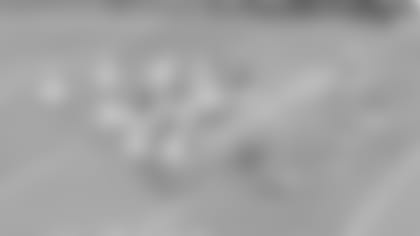
The ball is snapped, and Hurns is running his slant. Shorts is starting his route, which will still ultimately be a slant. But he starts running outside towards the numbers before then cutting back inside (almost akin to a 'Texas' route). This concept still accomplishes the same task, creating space underneath to hit a receiver on the run.
The Jaguars will do that with a tight end, they'll do it with a back out of the backfield, and as we saw on that play, they'll do it with a receiver coming in motion. I thought it was a really cool way to run a simple concept to gain 'easy' yardage.
One of the other things Jacksonville does working off of Tosser is run sluggo routes. They are a big "sluggo" team (Slant Go = Sluggo), and run it in every area of the field.

The Jaguars are in the red zone, and the Cleveland cornerback (who sees the slant from the No. 2 receiver) expects a slant on the outside and looks to jump the route.

This isn't a slant route, however, as Shorts gives an initial move inside before breaking upfield, getting over the top of the corner and streaking wide open into the end zone.
Easy throw and catch for Henne, who drops a pass right into Shorts' waiting arms for the touchdown. Great playcall and great execution from the Jaguars.
Just as they like to set up sluggo routes with slants, the Jaguars like to lull opponents to sleep with other short, quick-hitting concepts before hitting them with a deep shot, a pass game rope-a-dope if you will. They are a big wide receiver screen team, running a lot of bubble and rocket screens to get the ball into their pass catcher's hands as soon as possible and let them make a play. Here's an example of what I mean from a game last year.

The No. 1 receiver will take one step and turn to look for the football, while the No. 2 and No. 3 receivers run to the second level to serve as lead blockers. This is a pretty simple concept.

The ball is snapped, and the Tennessee Titans think that this is a screen all the way. Both inside receivers release, but they aren't actually looking to block anyone ...
Tennessee's second-level defenders are completely fixated on the screen, something they game plan for all week long, and the would-be blockers sneak by for a long gain and a first down. It's plays like this that the Jaguars made a living off of in 2013, and I would expect them to do it again in 2014.
Defensively, a lot of people assumed that when Gus Bradley joined the Jaguars before last season that he would be installing the exact defense the Seattle Seahawks ran during his time as their defensive coordinator. Seattle is widely known for employing a base 4-3 under front and playing a lot of Cover-3 behind it. Last year, however, the Jaguars were mostly a 4-3 over front, and played more Cover-2 than anything else. What are the differences? Let's look at the "over" front first.

The first basic thing you're looking for when differentiating the over front from the under front is, where is the offense's strength or, more plainly, where is the tight end? The location of the tight end typically dictates where the strength of the offense is. Next, look at where the 3-technique is located. A 3-technique is a defensive lineman located on the outside shoulder of a guard, in this case it's Jacksonville's Sen'Derrick Marks. With Marks lining up as a 3-technique to the same side of the formation as the Chicago Bears' tight ends, you now have the makings of an over front. To the left of the screen, you can see defensive end Red Bryant (No. 79), he is playing as the strong side defensive end in this shot, and is lined up over the tight end.

With the 3-technique to the strong side, conversely your nose tackle will then be located to the "open" or "weak" side of the offensive formation. This is Jacksonville's nose tackle Roy Miller. This player could be lined up as a "shade" just over top of the offensive center, or as far wide as just inside the helmet of the guard in what is called a "2i" technique. Finishing out the open side is another new player on the Jags' front, defensive end Chris Clemons. He is the open-side end. When you combine these four positions and the way they are placed along the line of scrimmage in respect to the offensive strength, you have an over front. Now, let's look at the "under" front.
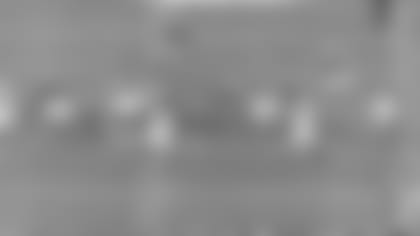
Remember what I said before about first finding the tight end to decide what is the "strong" side of the formation? You can see Detroit tight end Brandon Pettigrew is lined up to the left of your screen with his hand on the ground. Notice the nose tackle in this shot, Miller, is lined up to the same side as the tight end (in the last shot, it was the 3-technique). This is the big fundamental difference between the 4-3 over and the 4-3 under, the placement of the nose tackle and 3-technique. Here, the nose is to the strong side with the 3-technique to the open side. In the over front, it's the opposite.
The Jaguars will likely play a fair dose of both fronts on Sunday, and it will be interesting to see moving forward how much closer they get to playing Seattle's scheme as Bradley starts to put more of his stamp on this defensive unit.
While the over and under front will be the focus on Sunday, there have been rumblings in Jacksonville that the Jaguars will actually employ more looks playing a "bear" front in 2014. Most people in Philadelphia recall the "bear" front from Buddy Ryan's days as head coach and those dominant defenses of the late 80s and early 90s. It's rare that teams will play that exact style of defense with that many players close to the line of scrimmage, not in today's space-favored NFL. However, there are some wrinkles that are still alive today, and the Jaguars have shown flashes of it in the preseason.

Notice here that you have not just one 3-technique, but actually two 3-techniques as well as a nose tackle in this look from Jacksonville. What this results in is all three of the offense's interior linemen are "covered" by opposing defensive linemen. This can potentially mess with not only protection schemes, but also blocking schemes in the run game. It's really difficult to create double teams with your offensive line without any of these players coming free. Typically, when you're employing a bear front, you're looking to prevent inside runs by causing havoc inside. How much the Jaguars deploy a bear front on Sunday will be one of the things I will be keeping a close eye on.
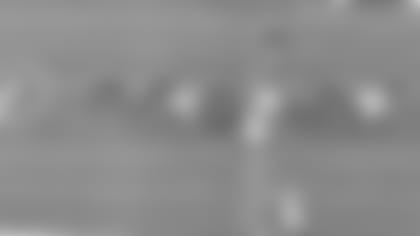
Let's take a second to focus on No. 56, linebacker LaRoy Reynolds, who is the starting "Otto" linebacker for Jacksonville. What exactly is the "Otto"? Well, Bradley and his staff coined the term this past offseason when they decided they wanted their strong side linebacker to be able to play up near the line of scrimmage and hold up against the run, drop in coverage and rush the passer when needed. They went out and signed Dekota Watson from the Tampa Bay Buccaneers in free agency to fill this role, but Reynolds stepped up and will get the starting nod on Sunday.

Lining up opposite Reynolds on this play is defensive end Alan Branch, a former second-round pick out of Clemson. Branch is one of the Jaguars' "Leos." The "Leo" is a term that gets thrown around often nowadays thanks to the success Bradley and his defensive system had in Seattle with Pete Carroll and the Seahawks. The "Leo" (an abbreviation for linebacker/end) is a hybrid player who is primarily used as a pass rusher. In the 4-3 over and under shots I showed above, you saw Clemons and Branch lined up as open-side defensive ends, they are the Leos in this defense. As I look at the sideline angle of this play, notice that Branch is close the formation, but he won't stay there for long.
Just before the snap, Branch moves away from the formation to drop out in coverage, flashes the great athleticism he has and makes a great play on the ball. He returns it back for a good gain making a huge play with the interception. The Jaguars will employ the Bear front to disrupt the run game inside, but they are not afraid to drop their "Otto" and "Leo" players into coverage and allow them to make plays in space.
While we're talking about "Leos," let's transition to a subgroup I noticed the Jaguars employ this preseason, a three-"Leo" package to get after the quarterback on passing downs.

You can see all three Leos circled here, from left to right - Clemons, No. 59 Ryan Davis and to the far right is Branch. Marks is the lone defensive tackle out there, and with his quickness and snap anticipation he is a prototypical pass rushing 3-technique that can excel on passing downs.
You can see the pressure get to the quarterback, who forces an ill-advised throw into the waiting arms of safety Winston Guy, who returns it for a touchdown. The Jaguars have been in attack mode all preseason long, and have rotated waves of defensive linemen in with much success. Look for that to continue this fall.
Fran Duffy is the producer of "Eagles Game Plan" which can be seen on 6abc Saturdays at 7:30 PM. Be sure to also check out the "Eagle Eye In The Sky" podcast each week online and on the Philadelphia Eagles podcast channel on iTunes. Prior to joining the Eagles in 2011, Duffy was the head video coordinator for the Temple University Football team under former head coach Al Golden. In that role, he spent thousands of hours shooting, logging and assisting with the breakdown of the All-22 film from the team's games, practices and opponents.




